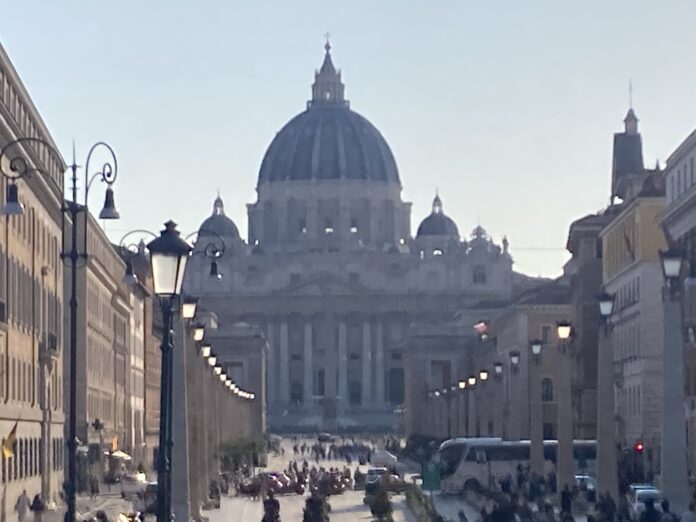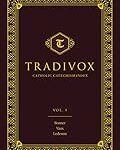Today’s memorial marks the dedication of the basilicas of Saints Peter and Paul – following upon that of the Lateran Basilica last week. More specifically, this is the anniversary of the consecration of the two versions of Saint Peter’s basilica, and more on that shortly. The feast reminds us of the importance of the one, holy, catholic and apostolic Church as the ‘pillar and bulwark of the truth’, existing throughout the world, and unto the end. The Church is the path to salvation, against which the very gates of hell will not prevail.
For today’s memorial also calls to mind that the Church, founded by Christ, was established in the world under these two Apostles, collaborators and friends in life and in death, meeting their end in the bloody persecution under the deviant, perverted, anti-Christian emperor Nero, in the precincts of that very city that would be called ‘eternal’. The two basilicas of Saint Peter’s, and Saint Paul’s ‘outside the walls’, are built over the respective sites of the martyrdoms of the two Apostles, and where their bones now rest until the return of Christ, and the resurrection of all the dead, unto life, or unto perdition.
The basilica of Saint Peter is perhaps the most famous church in the world. Its first iteration, built under the direction of Emperor Constantine, was dedicated on this day in 326 by Pope Sylvester I. Its second and current version, built, designed and decorated by some of the greatest of the renaissance artists was consecrated on this same day 1300 years later, in 1626, by Pope Urban VIII. The artistic treasures of this glorious building are too numerous to be recounted here, but we might recall not least Michelangelo, his Sistine chapel, the immense and precise statuary (not least the ineffable Pieta). We may also add the delicate proportions of the massive cupola, which was considered an architectural and engineering impossibility, until the same Michelangelo’s incomparable mind discovered a solution in making the shape almost spherical, but with a slight ellipse, scarcely noticeable. This is much as God did with the orbits of the planets, most of whose orbits are also nearly perfectly circular, but with just the tinge of an ellipse, as Johannes Kepler would deduce in 1609, just before the church’s dedication.
Like the finely crafted cosmos, whose symmetrical laws we are still discovering, the Church is a precious jewel in the hand of God, a spiritual, moral and intellectual edifice, showing with clarity the way and the truth to the fullness of life – even if such is at times obscured in this vale of tears by scandal, complaisance and compromise. We must look past what obfuscation and weakness there be in any particular holders of the offices of Peter and Paul – and I need not make a list – to the truth, all those central mysteries of our faith, for those with ‘eyes to see and ears to hear‘. Stay with the Church, and do not jump ship. Perhaps it’s no coincidence on this day that also marks Boniface VIII issuing his controversial bull Unam Sanctam in 1302, emphasizing the supreme spiritual authority of the papacy. Extra ecclesiam nulla salus still holds, if in a nuanced way, that outside the Church, there is no salvation. All others paths must eventually lead to Rome, or they lead nowhere at all.
By decree of Pope Sixtus V in his papal decree of 1585, Romanus Pontifex, bishops are required to make their quinquennial ad limina visit to Rome – every five years, to the ‘threshold of the Apostles’. We too might trod, with Peter and Paul and all the saints, spiritually, at least, that straight and narrow way that will bring us where we belong, here and into eternity.
Saints Peter and Paul, orate pro nobis!











